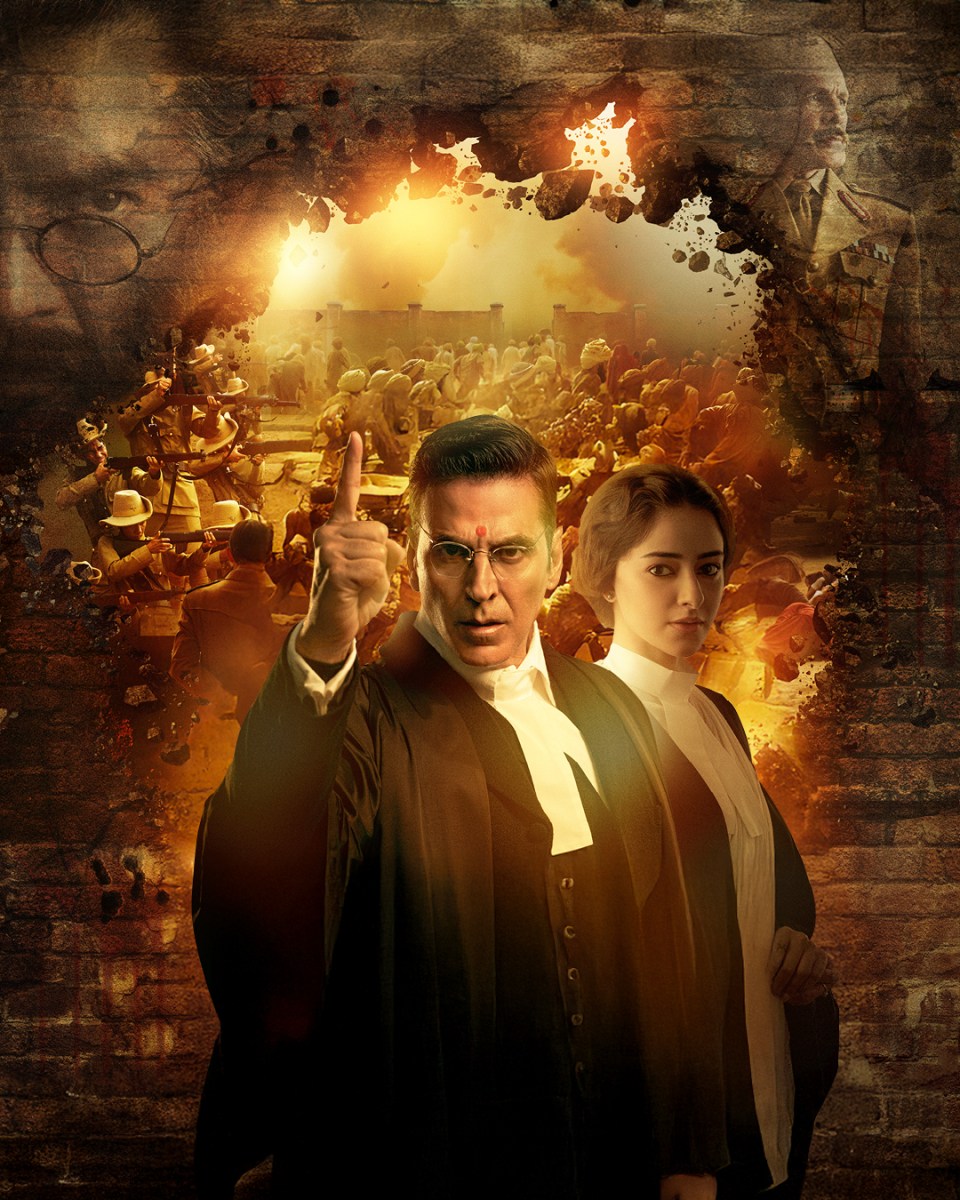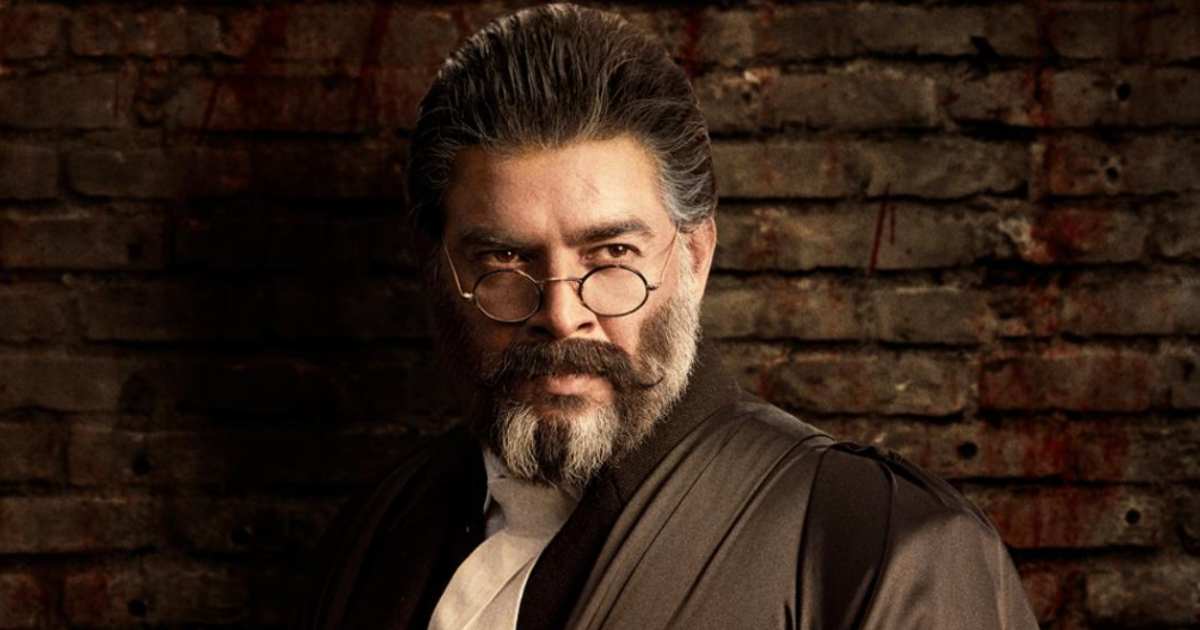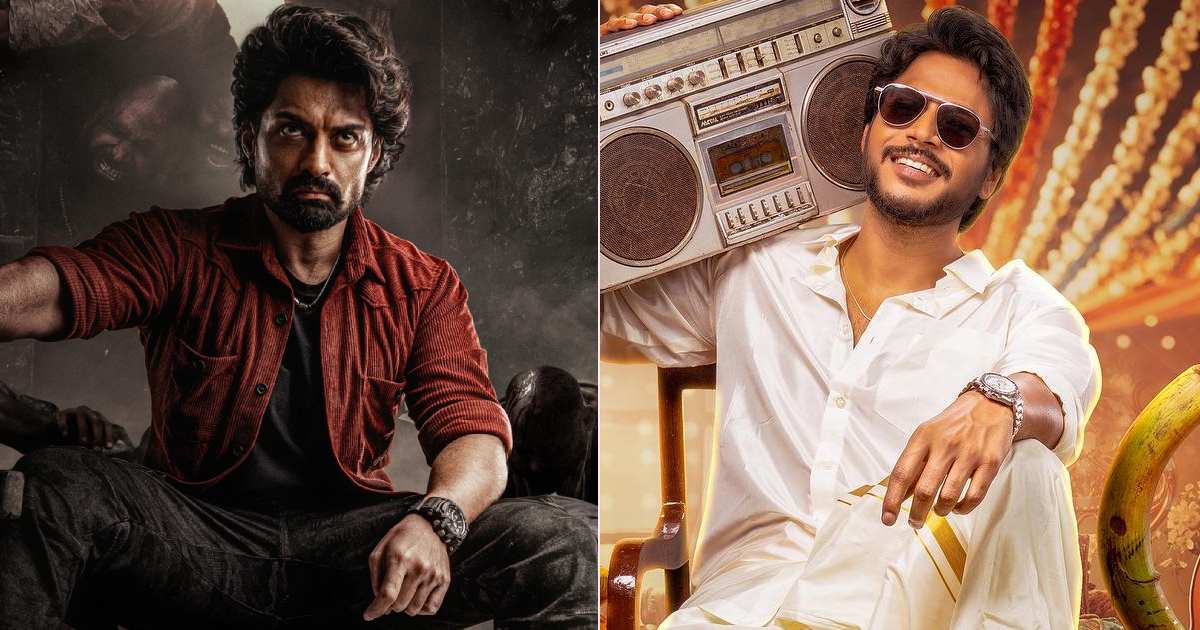
More like Jolly LLB chapter – Beyond Bollywood
Shaming the British imperialists is all fine, but have Akshay Kumar, Karan Johar, and director Karan Singh Tyagi woven in too much fiction?
Rating; ⭐️💫 ( 1.5 / 5)
By Mayur Lookhar
Expecting justice in an imperial court is wishful thinking. A coloniser only hears what it wants to hear, says what it wants to say, and writes what it wants to read. It also writes history the way it wants to be remembered. Most colonial states carry their share of untold stories—histories rewritten, sometimes even decades after gaining independence.
For decades, Indian history has evoked mixed views and sparked intense debate, especially in the last ten years. If not rewritten, we’ve certainly seen a rejig of certain parts under the current Indian establishment.

C. Sankaran Nair is a relatively unspoken name in Indian history. Curiosity sparked the moment Dharma Productions announced a film on him, starring Akshay Kumar, R. Madhavan, and Ananya Panday. A year later, the untitled project was named Kesari Chapter 2 [2025]. Though a spiritual sequel, it tells a different story set in a different era. The production house and Akshay Kumar remain the only constants in this franchise.
Basic research on Nair led us to his story, where he served as the Advocate General in the Madras Presidency. Nair was a loyalist to the British Empire, and in 1915, he was included in the Viceroy’s Executive Council. Things changed after the Jallianwala Bagh massacre of 1919, when Nair resigned from the council. Enraged by the genocide, he wrote a book, Gandhi and Anarchy (2022), in which he was critical of Michael O’Dwyer, the Lieutenant Governor of the Punjab Presidency, and his administration’s policies that led to the massacre. A peeved O’Dwyer filed a defamation suit against Nair in the King’s Bench Division of the High Court of Justice in London in 1922.
As mentioned earlier, imperialism and its prejudices played a role in the case. Five weeks later, Nair, as expected, lost and was ordered to pay a fine of £500. The verdict was always a foregone conclusion, but Nair gained respect among his people for telling the Jallianwala Bagh massacre story to the world.

Writer and first-time director Karan Singh Tyagi’s Kesari Chapter 2 [2025] is based on Raghu and Pushpa Palat’s The Case That Shook the Empire (2021). This book was written 102 years after the Jallianwala Bagh massacre. Raghu is the great-grandson of C. Sankaran Nair. While we haven’t read it, its blurb makes it clear that the book is based on the libel case filed against C. Sankaran Nair. However, in the Bollywood film, it is Nair (Akshay Kumar) who shakes the crown by filing a case against General Dyer and the O’Dwyer administration for the Jallianwala Bagh massacre. Interestingly, the primary plaintiff in the case is Gilreet Gill (Ananya Panday), a young Indian female lawyer in Amritsar, with Nair emerging as the co-lawyer on the first day of the court proceedings.
While the larger history hasn’t been altered, the drama and events that unfold in this reel court proceeding leave you confused about the actual facts. Our history books since Independence may have overlooked many untold stories, but surely it shouldn’t take 78 years to tell the C. Sankaran Nair story. In Kesari Chapter 2 , it’s not just Nair and Gill suing the Crown; we also witness a character named Martha Stevans accusing one of the Jallianwala Bagh martyrs of rape. Phew—where did that come from? We couldn’t find any information to corroborate this subplot.
Honestly, the fear of over-dramatisation began with the trailer itself, where Tyagi introduced a fictional character, Neville McKinley (R. Madhavan), as the man defending the Crown against Nair’s allegations. Then there’s Nair’s devil-may-care attitude—he isn’t afraid to drop the F-word in court. Even if such defiance were true, one doubts the real Nair would have approved of such scenes in his biopic. Add Martha, Gilreet, and the many surprising turns the film takes, and you begin to wonder if producer Karan Johar, director Karan Singh Tyagi, and co-writer Amritpal Singh Bindra have woven in a bit too much fiction around a real tragedy. What could have been a stirring courtroom chronicle instead slips into rabble-rousing theatre.
The most bizarre subplot is the General Reginald Dyer (Simon Paisley Day) backstory, where it’s revealed that he was bullied in school by Sikh boys who mocked his stammer. Dyer was born in Murree (now in Pakistan), but much of his early life was spent in Simla (now Shimla). That bullying is shown to have instilled in him a strong hatred for Indians, particularly Sikhs.
Dyer was sent to school in Ireland at the age of 11, where he and his brother were bullied for their “Indian ways.” While The Man Who Saved India* by Nigel Collett mentions this, there is no evidence to suggest Dyer was ever bullied by Sikh boys. So, where has this come from?
Also, while karma struck him hard—he died a miserable death four years later, suffering multiple strokes and paralysis—there is nothing to suggest he stammered as a child. Portraying Dyer as a victim of bullying not only distorts history, but risks offending Sikhs and, more worryingly, could be used by his descendants and colonial apologists to justify Dyer’s dire actions at Jallianwala Bagh.

Drama is an essential part of any storytelling, and the Dharma film moves smoothly until the halfway mark. But post-interval, its heightened drama and courtroom theatrics make you wonder— is this really Kesari: Chapter 2 or a chapter from Jolly LLB?
Akshay Kumar is no stranger to portraying unsung South Indian heroes. However, unlike Airlift (2016), Pad Man(2018), or Sarfira (2024), Kesari: Chapter 2 doesn’t transform a South Indian figure into a North Indian or Maharashtrian character. A Punjabi actor playing a Nair, director Karan Singh Tyagi wisely doesn’t burden his protagonist with an accent—Kumar speaks just a line in Malayalam. Kumar’s Nair is initially loyal to the Crown—a sharp legal eagle who believes that courtrooms aren’t about truth or lies, but about winning or losing. This philosophy shifts in the aftermath of the Jallianwala Bagh case.

While the film focuses on Nair’s pursuit of justice in the Jallianwala Bagh massacre, it overlooks other significant aspects of his life, particularly his equation with the Indian National Congress and his staunch opposition to the elite Mylapore group. Perhaps the makers felt those threads would divert focus from the central narrative and chose to keep the spotlight firmly on the case. Despite the linguistic gap, Akshay Kumar shows early promise with compelling intensity. But as the screenplay spirals into chaos, Kumar, too, loses grip.
Given the gravity of the tragedy, Tyagi also chooses to underplay Nair’s personal life. Unfortunately, Regina Cassandra is reduced to an academic presence as Nair’s wife, Parvathy Amma.

From the moment Dharma announced the untitled film on C. Sankaran Nair, many assumed that the role would go to Tamilian R. Madhavan. However, the trailer dropped a bombshell when it revealed that it was not Madhavan, but Akshay Kumar, who was cast as C. Sankaran Nair. The Jharkhand-born Madhavan found himself playing a fictitious character, Neville McKinley. What could be the rationale behind this move? Did Tyagi and Dharma feel that such a character would appeal to local audiences? But then, Tyagi’s British characters speak Hinglish. What purpose, then, does Neville McKinley serve in this narrative?
The answer perhaps lies in Imperial Britain’s divide-and-rule policy. Here’s a converted Christian, a loser in life, who takes up this case purely to outmaneuver a fellow Indian lawyer he never liked. The other, more accurate example is the British deploying Nepalese, and Afghan soldiers in the Jallianwala Bagh massacre. While we still believe Madhavan was better suited to play Sankaran Nair, he is fairly competent as Neville McKinley.

Ananya Panday finds a meaningful role but suffers from the second-half narrative. British actor Simon Paisley Day is decent in his Hindi and convinces as a remorseless character. With General Dyer as the central focus, Mark Bennington is relegated to playing second fiddle as Lieutenant Governor Michael O’Dwyer.
The film goes overboard with its fictional elements but is fairly well-written, with fine dialogues by Sumit Saxena. The use of the F word in court and Nair referring to the Sikh Regiment as the Sardar Regiment in one scene may come across as jarring.
At the beginning, we spoke of Imperialists shaping history to suit their whims and fancies. But even if the drama is viewed as an untold story, colonial mindsets in Britain may argue that India and Bollywood are now scripting convenient narratives to cater to domestic sentiments. The upside for Kesari Chapter 2, however, is that we now live in an India where patriotism and jingoism thrive—leaving little room or demand for objectivity.
Watch the video review below.
Publisher: Source link



